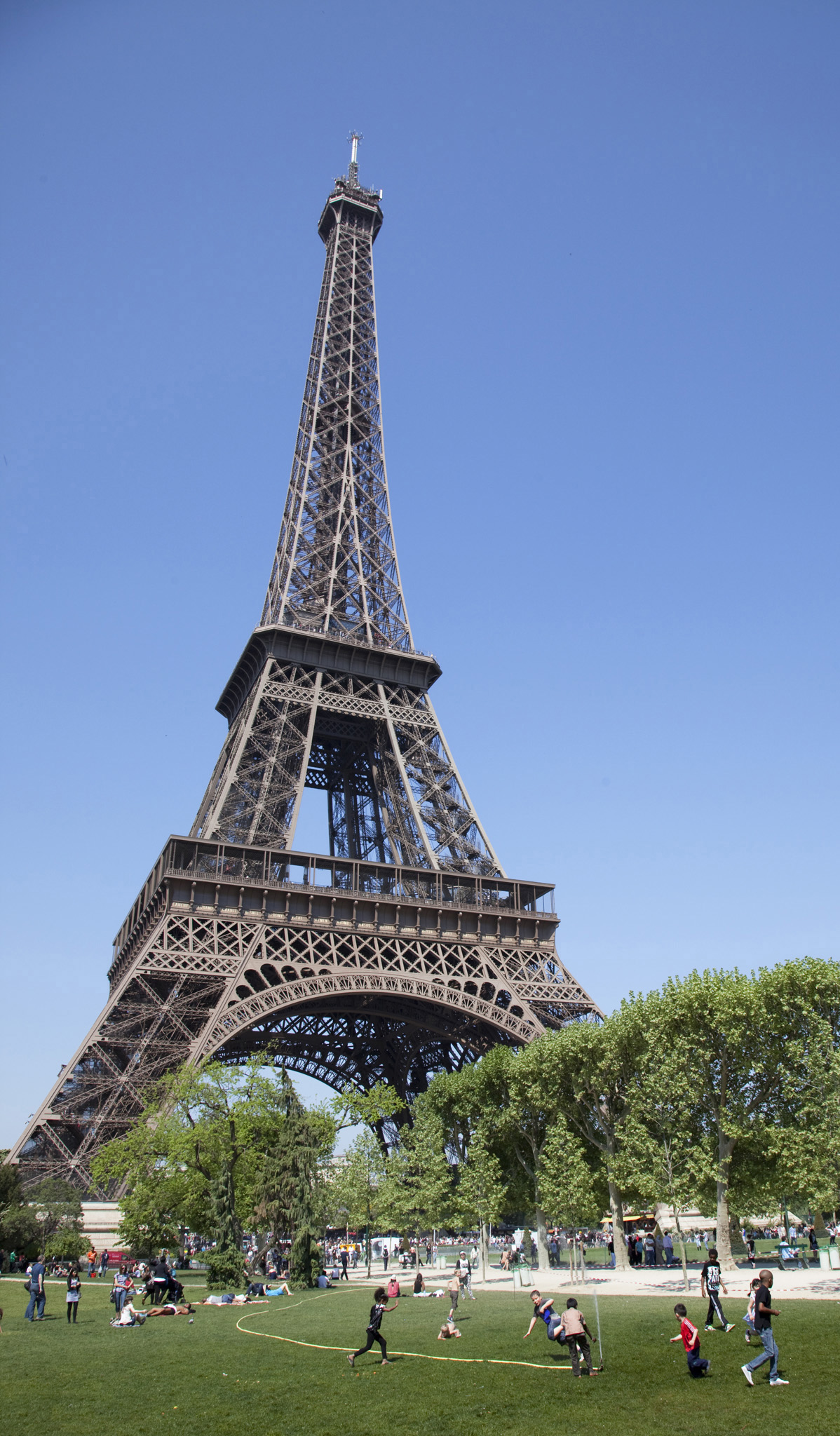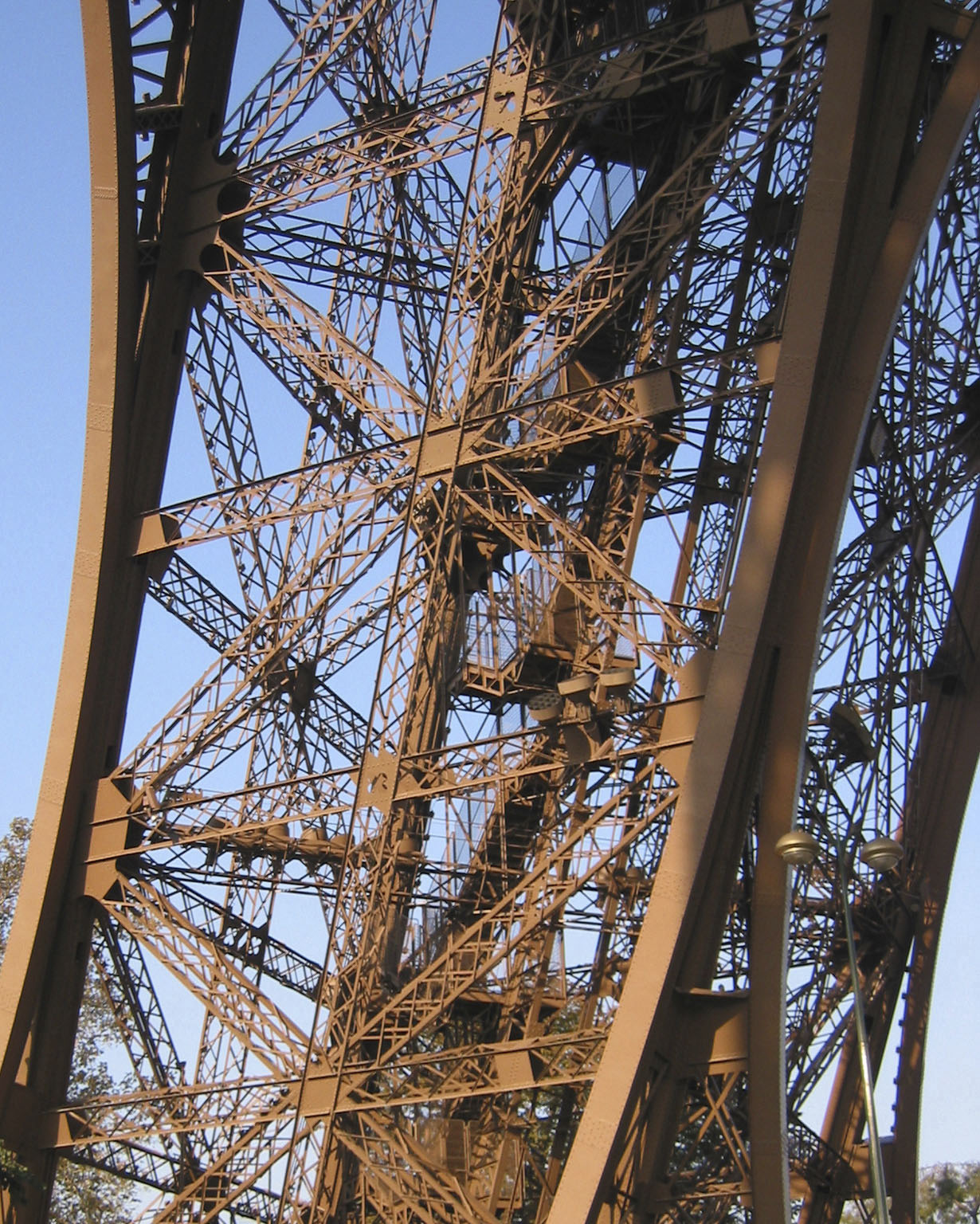
EIFFEL TOWER
The most distinctive symbol of Paris, the Eiffel Tower was much maligned by critics when it appeared on the city’s skyline in 1889 as part of the Universal Exhibition, but its graceful symmetry soon made it the star attraction. A feat of engineering, at 1,062 ft (324 m) high, it was the world’s tallest building until it was surpassed by New York’s Chrysler Building in 1930. Despite its delicate appearance, the tower weighs 11,133 tons and French engineer Gustave Eiffel’s construction was so sound that it never sways more than 3½ in (9 cm) in strong winds.

Eiffel Tower
NEED TO KNOW
![]() Champ de Mars, 75007 • 08 92 70 12 39 • www.toureiffel.paris
• Open Elevator 9:30am–11:45pm daily; last adm for top 10:30pm (mid-Jun–Sep 1: 9am–12:45am; last adm 11pm); Stairs
9:30am–6:30pm daily; last adm 6pm (mid-Jun–early Sep: 9:30am–12:45am; last adm midnight) • Adm $11–28 (stairs & elevator only);
$6–14 for under 18; check website for various combos
Champ de Mars, 75007 • 08 92 70 12 39 • www.toureiffel.paris
• Open Elevator 9:30am–11:45pm daily; last adm for top 10:30pm (mid-Jun–Sep 1: 9am–12:45am; last adm 11pm); Stairs
9:30am–6:30pm daily; last adm 6pm (mid-Jun–early Sep: 9:30am–12:45am; last adm midnight) • Adm $11–28 (stairs & elevator only);
$6–14 for under 18; check website for various combos
- There are restaurants and snack bars on levels 1 and 2, along with a Champagne bar on level 3.
- Skip the line and book the ticket online or opt for a tour (cultival.fr).
1. Lighting
Some 20,000 bulbs and 336 lamps make the Eiffel Tower a spectacular nighttime sight. It sparkles like a giant Christmas tree for five minutes every hour from dusk until 1am.

Lighting
2. View from the Trocadéro
Day or night, the best approach for a first-time view of the tower is from the Trocadéro, which affords a monumental vista from the Chaillot terrace across the Seine.
3. Gustave Eiffel’s Office
Located at the top of the tower is Gustave Eiffel’s office, which has been restored to its original condition. It displays wax models of Thomas Edison and Eiffel himself.
4. First Level
You can walk the 345 steps up to the 187-ft- (57-m-) high first level and enjoy a meal at 58 Tour Eiffel. Renovated in 2014, this level includes glass floors and educational displays.
5. Viewing Gallery
At 906 ft (276 m), the stupendous view from here stretches for 50 miles (80 km) on a clear day. You can also see Gustave Eiffel’s sitting room on this level.

Viewing Gallery
6. Second Level
At 377 ft (115 m) high, this level is the location of Le Jules Verne restaurant, one of the finest in Paris for food and views. It is reached by a private elevator in the south pillar.

Second Level
7. Champ-de-Mars
The long gardens of this former parade ground stretch from the base of the tower to the École Militaire (military school).
8. Ironwork
The complex pattern of the girders, held together by 2.5 million rivets, stabilizes the tower in high winds. The metal can expand up to 6 in (15 cm) on hot days.

Ironwork
9. Bust of Gustave Eiffel
This bust of the tower’s creator, by Antoine Bourdelle, was placed below his remarkable achievement, by the north pillar, in 1929.
10. Hydraulic Lift Mechanism
The 1899 lift mechanism is still in operation and travels some 64,000 miles (103,000 km) a year. The uniformed guard clinging to the outside is a model.
THE LIFE OF GUSTAVE EIFFEL
Born in Dijon, Gustave Eiffel (1832–1923) was an engineer and builder who made his name building bridges and viaducts, and helped in the design of the Statue of Liberty. Eiffel was famous for the graceful designs and master craftsmanship of his many wrought-iron constructions. He once said that his famous tower was “formed by the wind itself.” In 1890 he became immersed in the study of aero-dynamics, and kept an office in the tower until his death, using it for experiments. In 1889, when the Eiffel Tower was erected, its creator was awarded the Légion d’Honneur.
